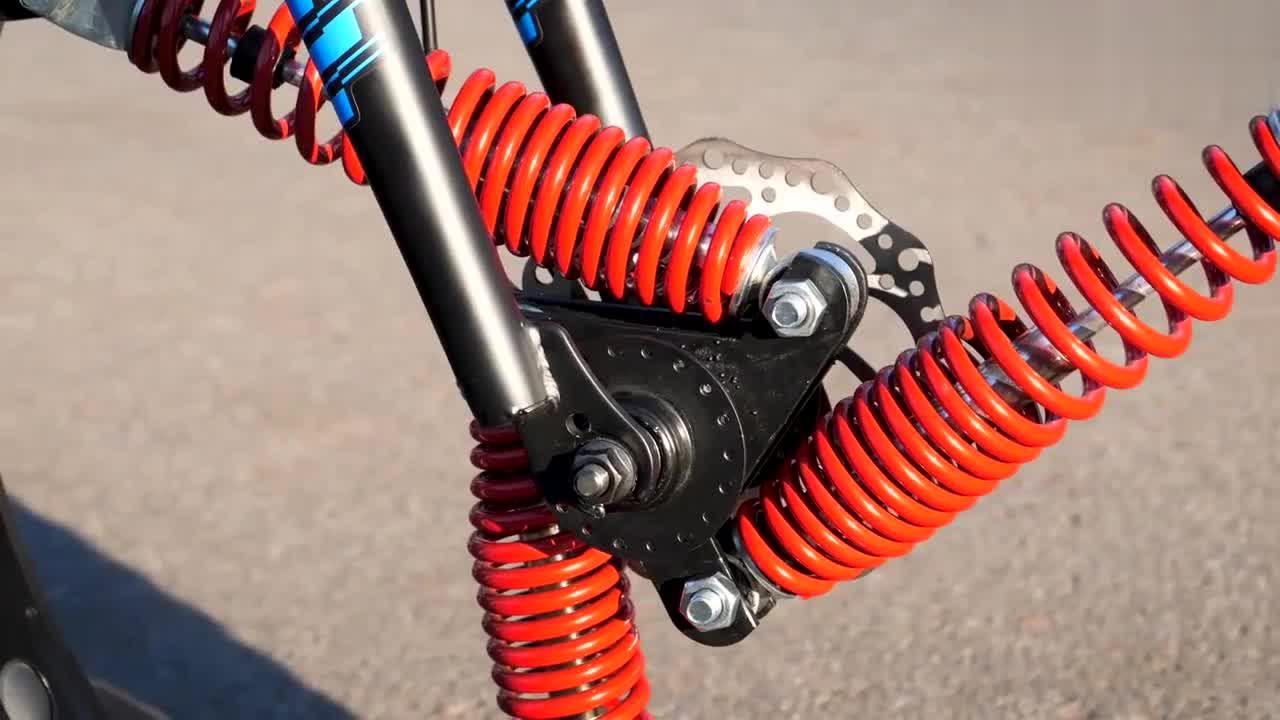7 9 月, 2023
What is the Lifespan a Shock Absorber?
The lifespan of a shock absorber varies based on the vehicle (mountain bike, motorbike, or car), the type of shock absorber, the conditions it’s used in, and maintenance. Here’s a breakdown of the typical lifespan of shock absorbers for each:
1. Mountain Bike Shock Absorbers:
- Typical Lifespan: 2 to 5 years or 200 to 300 hours of riding, depending on usage and terrain.
- Factors Affecting Lifespan:
- Riding Terrain: Rough, rocky trails with heavy impacts will wear out shocks faster than smooth, maintained trails.
- Rider Weight: Heavier riders put more stress on shocks.
- Frequency of Use: More frequent riders will wear out shocks faster than casual riders.
- Maintenance: Regular servicing (like replacing seals and oil) can extend the lifespan.
- Maintenance Interval: It’s recommended to service air shocks every 50-100 hours of riding, and coil shocks may need less frequent service.
2. Motorbike Shock Absorbers:
- Typical Lifespan: 20,000 to 30,000 miles (32,000 to 48,000 km) or 2 to 5 years.
- Factors Affecting Lifespan:
- Riding Conditions: Off-road or aggressive riding will wear shocks out faster than smooth highway riding.
- Weight and Load: Carrying passengers or heavy luggage can reduce shock life.
- Riding Style: Aggressive braking, cornering, or racing can wear out shocks faster.
- Maintenance: Regular checks and adjustments, such as maintaining proper preload and checking for leaks, can extend the shock’s life.
- Signs of Wear: Leaking oil, reduced damping performance, bottoming out, or a harsh ride are signs the shocks may need replacement or service.
3. Car Shock Absorbers:
- Typical Lifespan: 50,000 to 100,000 miles (80,000 to 160,000 km) or around 7 to 10 years.
- Factors Affecting Lifespan:
- Driving Conditions: Driving on rough roads or potholes wears out shocks faster than smooth highways.
- Load and Vehicle Type: Heavier vehicles or those frequently carrying heavy loads will wear out shocks faster.
- Driving Habits: Aggressive driving with hard braking or sharp cornering will wear shocks more quickly.
- Environmental Conditions: Corrosive conditions like road salt or extreme weather can affect the lifespan of shocks.
- Maintenance: Regular inspection for leaks, uneven tire wear, or poor handling is crucial. Car shock absorbers generally don’t require much maintenance but should be replaced when worn.
Signs Shock Absorbers Need Replacement:
- Mountain Bike: Loss of smoothness, poor control on rough terrain, oil leaks, or reduced rebound.
- Motorbike: Excessive bouncing, poor cornering stability, unusual noise, or visible leaks.
- Car: Bouncy ride, uneven tire wear, poor handling, longer braking distances, or fluid leaks.
Extending Shock Absorber Lifespan:
- Regular Maintenance: Follow the manufacturer’s maintenance intervals and perform routine inspections.
- Proper Usage: Avoid unnecessary impacts (like hitting potholes at speed) and stay within weight limits.
- Service Intervals: For mountain bikes and motorbikes, getting the shocks serviced and tuned regularly will help ensure longevity.

